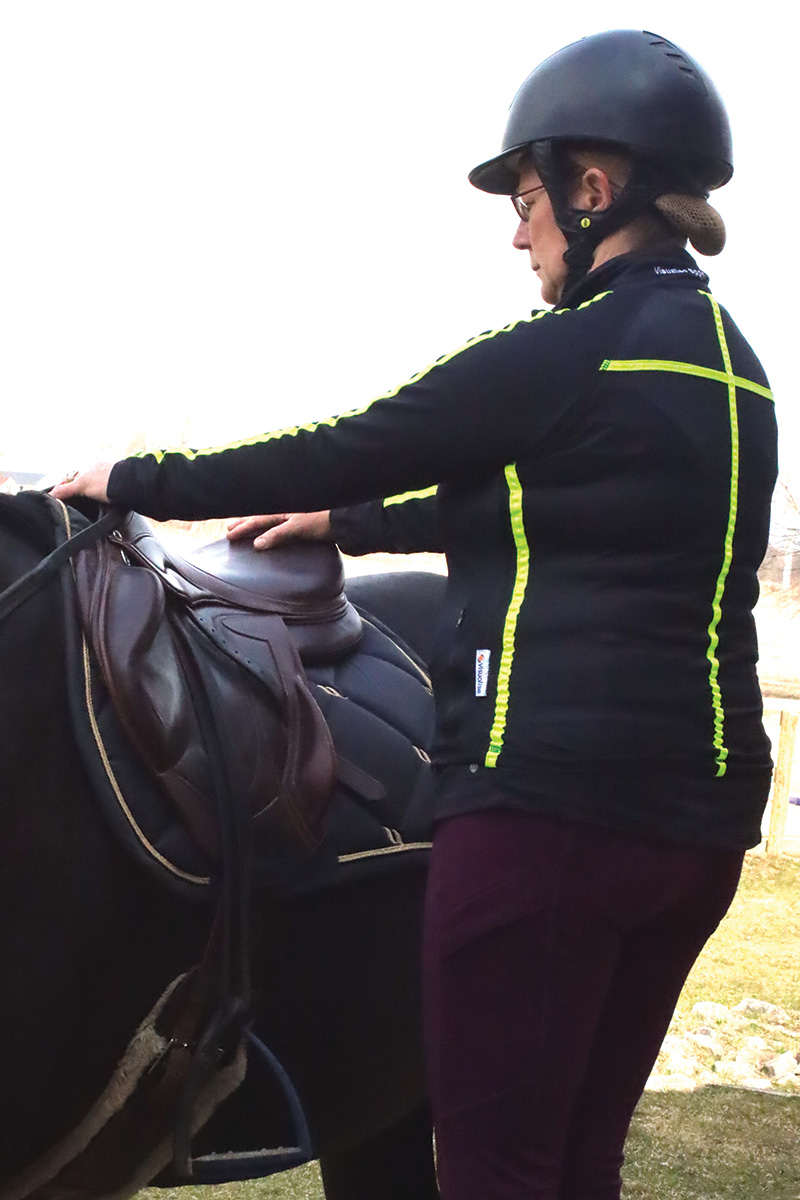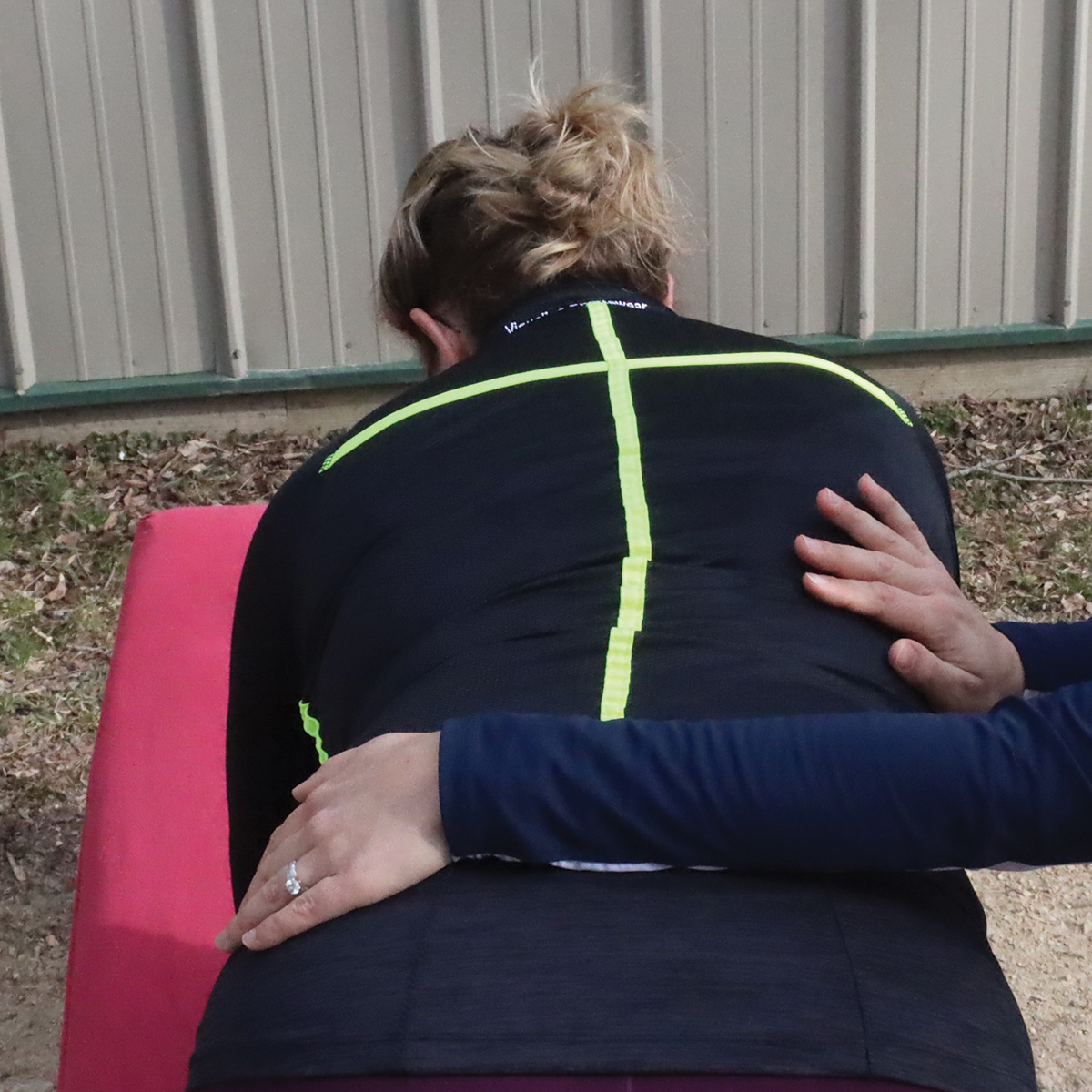I hold my breath, and not just when I ride. I’ve noticed I hold my breath while driving, while on my laptop, and even while lounging in front of the TV. My trainer still reminds me to breathe, even though I have been riding for decades. When my local dressage association hosted an online training about breathing for equestrians over Zoom, I enthusiastically signed up.
By becoming better breathers, we become more effective riders, in addition to gaining other significant health benefits.
Why Breathing for Equestrians?
I scribbled six pages of notes during the session, and learned that by breathing correctly, we can be a role model for our horse’s performance. I have a horse with anxious tendencies. When he gets anxious, I hold my breath. I had never thought of myself as a breathing role model.
Better breathing improves mental focus, physical stamina, and core strength, which improves balance in the saddle. Breathing optimally improves our emotional and behavioral states, and nose breathing—as opposed to mouth breathing—even changes the pH in our blood, making us less prone to inflammation and infection. Nose breathing also improves our immunity and muscle recovery.
Stress, anxiety, and rounded posture from too much tech time all contribute to less-than-ideal breathing. In addition, riders with poor body image who attempt to flatten their bellies by “sucking in” cannot take optimal breaths.
Riders are not alone in mediocre breathing. Our horses might not breathe optimally for reasons such as improper saddle and/or girth fit, stiffness due to age or cold weather, or standing in a stall for too many hours.
Lower Ribcage Motility Exercise  |
360-Degree Breathing
Baier delivered a hands-on anatomy lesson related to a concept called “360-degree breathing.”
She had us place one hand on our sternum and one on our upper abdomen; we inhaled and exhaled to both observe and feel how our hands rose and fell together in harmony.
Next, we held our hands on our side, in an exaggerated “bossy” hands on hips position, but instead of our hips, our hands were on our rib cages to feel the lateral expansion.
The best breathing practice is to have movement in all three regions simultaneously: up and forward, with our sternum and belly, and right and left on our sides. When 360 breathing, there will also be a bit of movement in your lower back as your diaphragm drops down, which draws attention to the horse’s hind end during deceleration for better downward transitions.
Lateral Expansion Exercises  |
Pre-Ride Breathing Awareness
A practice you can employ before riding is to check in with your breath as you drive up the farm driveway. Turn off that podcast (hopefully you listen to Barn Banter by Horse Illustrated) and assess how you’re breathing. Are you holding your breath? Are you breathing from your chest, or breathing from your belly?
Then note the surroundings. Is it a windy day? Has the temperature outside just dropped? Are horses playing, or grazing peacefully? Are there tree trimmers on property or tractors operating nearby? Ask yourself, “Does the environment change my breathing?”

Before mounting, assess your breathing. Take deep inhales and exhales as you put a foot in the stirrup and swing up into the saddle.
Lower Ribcage Lateral Breathing  |
Breathing as a Riding Aide
During the class, we got down on our hands and knees to pretend we were a horse tracking right. As we mimicked the curved shape of the bend, Baier encouraged us to think about expanding our left lung as we breathed, filling it up. As we tracked left, we focused on filling up our right lung.
“The intentional ‘steering’ of air into the outside lung will soften the outer trunk muscles and contract inner trunk muscles,” says Baier. “But you’re not doing anything with your legs—it’s all your breath. The utility of the breath will help you go deeper into the corners and have the momentum to connect to the outside rein.”
For a lazy horse, take a breath in and push it out forcibly, followed by the seat aide. If your horse is eager to go, take a backward breath, trying to breathe in along the back of your spine.
Your voice pitch, pace and power can also elicit two different responses in your horse. By speaking in a high-pitched, quick or excited sing-songy voice, it will set an energetic tone for the horse.
In contrast, a low-pitched voice drops air into our abdomens, which will work to help us lower and slow our horse’s energy and pace.
“Talk to him in your ‘man voice.’ Slow and low,” my trainer once coached when my Thoroughbred was over-enthusiastic in a lesson. My encouraging, up-talky “good boys” were not helping.
If your horse is spooky or too amped, try breathing in for five seconds, then exhale for six to eight seconds.
A breathing awareness exercise you can try any time is to stand next to your untacked horse, placing one hand on his belly and one on your own. Feel your horse’s breathing and try to match it. Without the distraction of riding or treats, we can create a sense of connection with our horse.
By intentionally pausing for small moments like this to focus on improving breathing, we can also bond more deeply with our horse.
About the ExpertAllie Baier, based in Mequon, Wisc., is a Doctor of Physical Therapy who treats equestrians of all ages and abilities through her practice, EquiPT™. She has worked as a horseback riding instructor, clinician and United States Pony Club Examiner, and Baier is B Graduate herself. |
This article about breathing for equestrians appeared in the July 2023 issue of Horse Illustrated magazine. Click here to subscribe!






